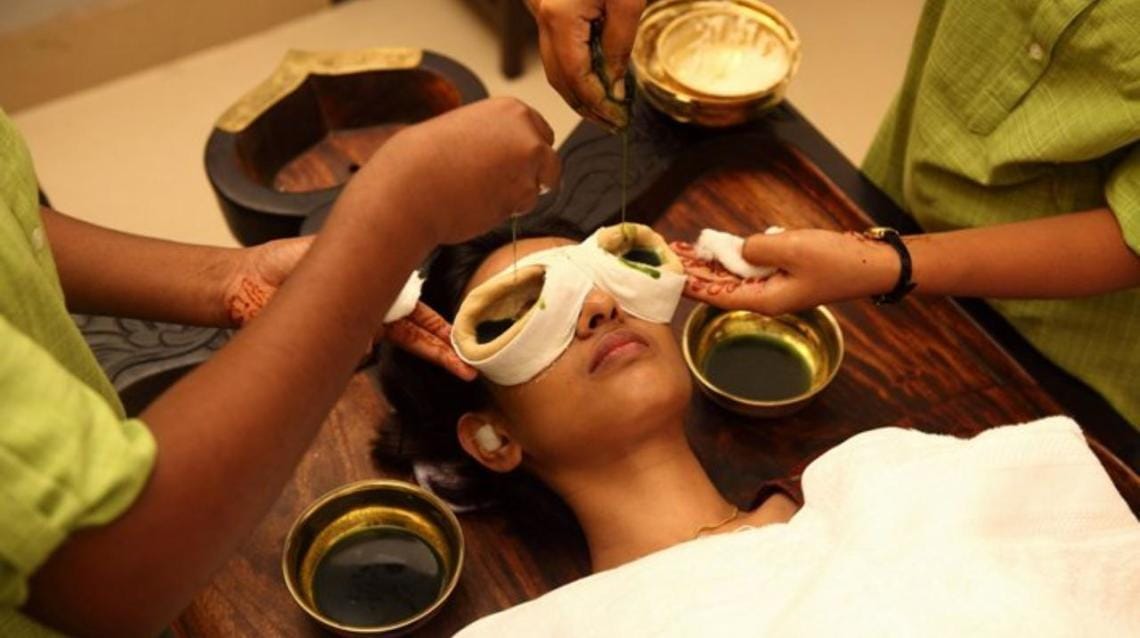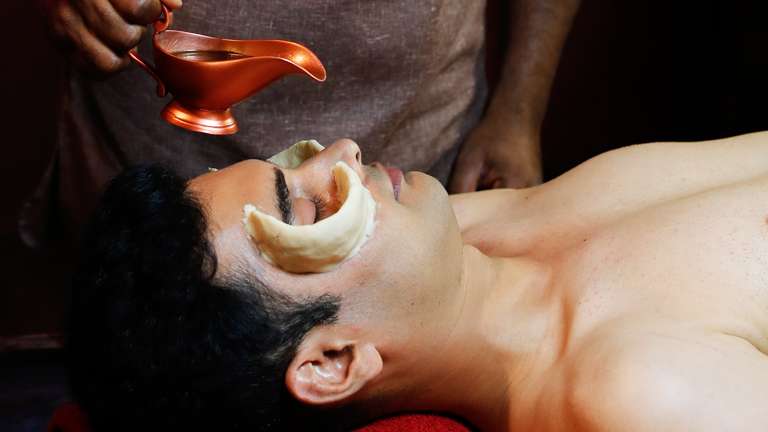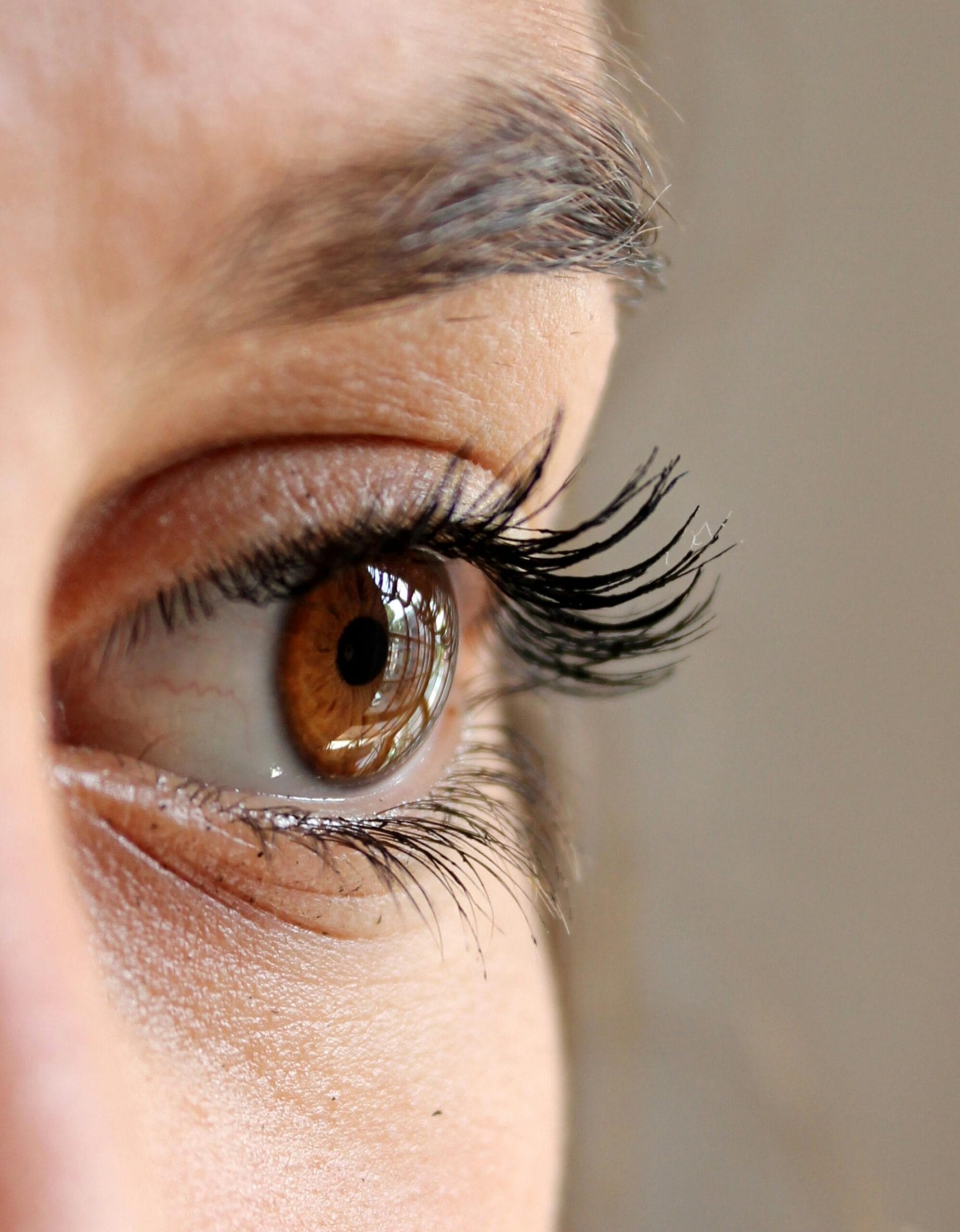Subtotal $0.00
Shopping cart
- info@kulathinmelayurveda.com
- Bethel School Rd, Thevalakkara, Mynagappally, Kerala 690524

Kerala’s classical Ayurvedic eye care combines Netra‑specific therapies, whole‑body detoxification, and diet to support ocular health. At Kulathinmel Ayurveda, we offer personalized plans for eye strain, dryness, and select chronic conditions—with careful co‑management for serious ophthalmic disease.

The eyes (Netra) are nourished by Pitta (vision), Vata (movement) and Kapha (lubrication). Digital strain, sleep debt, poor diet, and chronic metabolic issues disturb this balance, leading to symptoms like burning, dryness, headaches, and blurred vision.
Dry eye and computer vision syndrome
Eye strain–related headaches and peri‑orbital pain
Early/functional complaints like watering, itching, blepharitis
Co‑management for glaucoma, diabetic retinopathy, or retinal disorders (Ayurveda supports comfort and systemic balance; acute care remains under an ophthalmologist)
Ocular and systemic history, Prakriti/Vikriti analysis
Visual hygiene assessment (workstation, screen time, lighting)
Review of ophthalmic reports and blood sugar/lipid markers when relevant
Akshi/Netra Tarpana: ghee‑based nourishment pools for lubrication and comfort.
Aschyotana (medicated eye drops), Anjana (collyrium) as indicated.
Netraseka & Putapaka for cleansing and soothing.
Nasya and Shirodhara to reduce head stress and improve sleep.
Virechana for pitta disorders (burning, redness).
Basti for vata issues (dryness, twitching).
Rasayana with Triphala Ghrita, Amalaki, Yashtimadhu as appropriate.
Warm, mildly spiced, antioxidant‑rich meals; hydrate well.
20‑20‑20 rule, proper screen ergonomics and ambient lighting.
Gentle palming, blinking drills, Trataka (as advised), and adequate sleep.
Sudden vision loss, severe pain, trauma, or acute infections require urgent ophthalmic care. Ayurvedic care at our clinic complements—not replaces—conventional treatment for such cases.
Many patients report relief with Netra Tarpana, lifestyle correction, and systemic balancing. Results depend on severity and root causes.
We co‑manage with ophthalmologists. Ayurveda can support comfort and systemic balance; core disease management follows ophthalmology guidance.
Short protocols may be 5–7 days; comprehensive plans 2–4 weeks, followed by home care and reviews.


Visit or Call Us Today
Ayurveda focuses on identifying and correcting the root cause of illness by balancing body energies (doshas), improving digestion, and detoxifying the body. Unlike modern medicine, which often manages symptoms, Ayurveda emphasizes long-term healing and prevention.
Yes, Ayurvedic treatments use natural herbs, oils, and therapies that are generally safe when prescribed by a qualified practitioner. At Kulathinmel Ayurveda, treatments are customized to each patient’s condition, ensuring safety and effectiveness.
The duration varies depending on the severity of the condition, body constitution, and lifestyle factors. Some patients experience relief within weeks, while chronic conditions may require a few months of consistent treatment.
When taken under professional guidance, Ayurvedic treatments rarely cause side effects. Unlike chemical-based medicines, Ayurveda uses natural remedies that support overall health while addressing the specific illness.
Yes, in many cases Ayurveda can complement modern treatments. However, it’s important to consult an Ayurvedic doctor who can guide you on the best approach to avoid interactions.
WhatsApp us